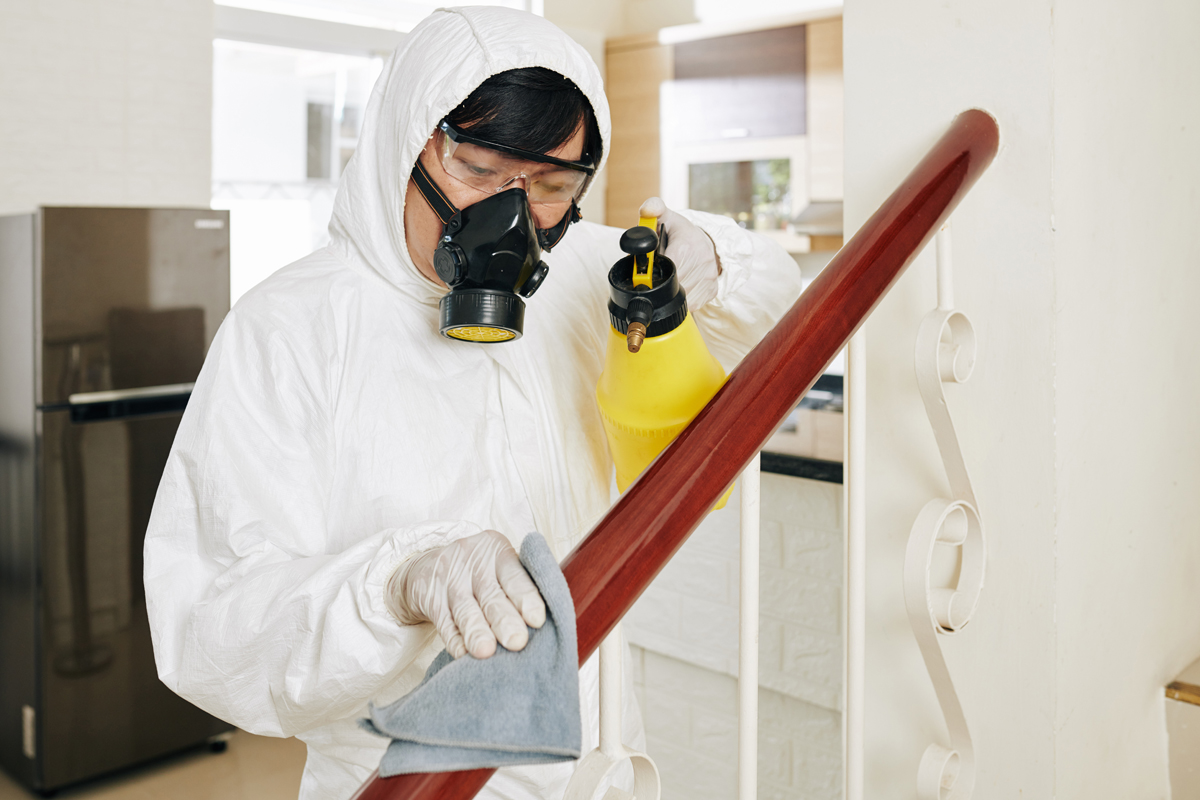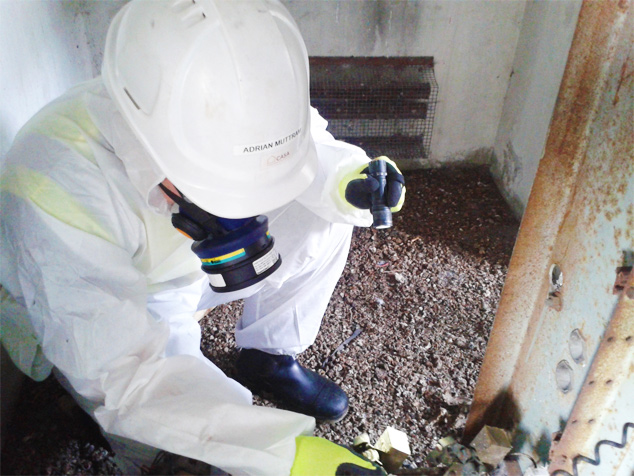The Full Process of Accredited Asbestos Testing to Make Sure Building Compliance
In the world of home monitoring and conformity, the procedure of certified asbestos screening stands as a vital element to ensure the security and well-being of residents. Comprehending the complex actions involved in this testing protocol is critical for homeowner and managers alike. From the first assessment to the last analysis of results, each stage plays an essential function in identifying the existence of asbestos within a property. Let's explore how this meticulous process unfolds to guarantee adherence to rigid policies and secure against potential wellness risks.
Accredited Asbestos Screening: First Analysis
In performing the initial evaluation for accredited asbestos testing, a thorough assessment of the home's materials is imperative to properly determine potential asbestos-containing products. Special focus is provided to products that are susceptible to damage or disturbance, as these scenarios can launch hazardous asbestos fibers right into the air.
Approved asbestos assessors follow stringent methods established by regulatory bodies to guarantee the precision and integrity of the screening procedure. By meticulously documenting findings and using sophisticated screening approaches, assessors can give residential or commercial property owners with a thorough report describing the presence of asbestos, if any type of, and the suggested steps for mitigation or removal. This preliminary evaluation establishes the foundation for succeeding activities to attend to asbestos issues and make sure the safety and security and compliance of the residential property.
Sample Collection Procedures for Asbestos Testing
Efficient example collection treatments are crucial in ensuring accurate asbestos testing results and compliance with regulative criteria. When accumulating samples for asbestos testing, it is critical to adhere to stringent methods to lessen the risk of contamination and make certain the integrity of the outcomes.
To start with, it is essential to recognize the believed asbestos-containing products (ACMs) and prioritize tasting areas based upon variables such as the product's problem, access, and possibility for disruption. Asbestos Testing. Examples need to be accumulated from different locations within the property to supply a comprehensive analysis of asbestos existence
Throughout sample collection, licensed professionals need to wear proper personal protective tools (PPE) to protect versus asbestos exposure. They should make use of tidy devices, such as disposable gloves and plastic sheet, to stop cross-contamination in between examples. Samples ought to be thoroughly gathered making use of a specified method, such as wet wiping or coring, and firmly sealed in impermeable containers to preserve their stability during transport to the lab for analysis.
Research Laboratory Evaluation Process for Asbestos Examples
Upon completion of the example collection process, the asbestos examples are meticulously carried to approved laboratories for careful analysis. At the lab, trained professionals deal with the examples with extreme like avoid any kind of cross-contamination or sample deterioration. The primary step in the laboratory evaluation process is example prep work, where the gathered examples are carefully refined to extract the asbestos fibers. Asbestos Testing. This step is critical to guarantee precise results in the subsequent evaluation.

As soon as the evaluation is complete, an in-depth report is generated, laying out the searchings for and verifying whether asbestos exists, the sort of asbestos fibers determined, and the concentration degrees. This info is important for homeowner to take the essential actions to guarantee conformity with asbestos regulations and protect the health of passengers.

Coverage and Interpretation of Asbestos Test Outcomes
Accredited asbestos testing labs give detailed reports that use critical insights into the existence, kind, and focus degrees of asbestos fibers found in samples gathered from buildings. These records are important for homeowner and supervisors to recognize the threat postured by asbestos and make informed decisions regarding its management or removal. The reports usually include info on the methods made use of for testing, the places from which samples were taken, the type of asbestos identified (such as chrysotile, amosite, or crocidolite), and the concentration levels of asbestos fibers discovered.
Analyzing these results needs knowledge to analyze the potential health and wellness threats related to asbestos direct exposure, establish image source the suitable strategy, and ensure regulatory compliance (Asbestos Testing). Depending on the findings, referrals might range from proceeded surveillance and maintenance to encapsulation or complete asbestos abatement. Building owners need to meticulously examine these reports and seek advice from asbestos professionals to develop an extensive prepare for attending to any kind of asbestos concerns recognized
Guaranteeing Residential Property Conformity With Asbestos Regulations
To maintain adherence with asbestos regulations, home owners need to vigilantly implement procedures to make sure compliance with applicable legislations and standards. This includes performing regular asbestos examinations by certified experts to identify any presence of asbestos-containing materials within the residential or commercial property. When asbestos is determined, original site residential property proprietors must follow asbestos administration prepares that rundown correct containment, elimination, or encapsulation treatments to avoid exposure and spread of asbestos fibers. Conformity likewise entails keeping thorough records of asbestos screening, maintenance, and elimination tasks for assessment purposes.
Homeowner must provide asbestos understanding training to workers and passengers to decrease the threat of asbestos exposure and guarantee correct handling of products that may have asbestos. Furthermore, it is critical to remain notified about any kind of updates or modifications in asbestos regulations to adjust management techniques accordingly. By proactively dealing with asbestos conformity demands, homeowner can create a secure atmosphere for residents and mitigate possible legal and health dangers connected with asbestos direct exposure.
Conclusion
To conclude, approved asbestos testing is a critical procedure for ensuring residential or commercial property compliance with regulations. The first assessment, sample collection procedures, lab evaluation, and interpretation of results are very Website important action in this procedure. By complying with these treatments, home proprietors can determine and resolve any kind of asbestos threats present, securing the health and wellness of residents and keeping conformity with regulative demands.